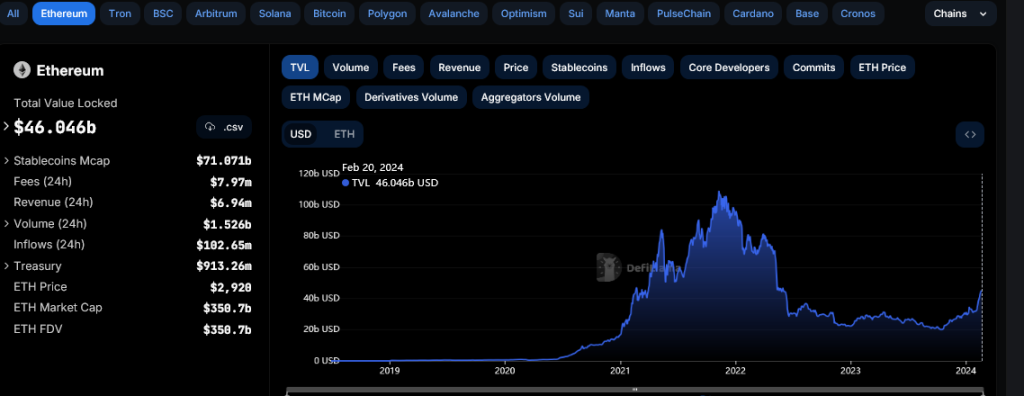February 20th Lookonchain data show One of the early investors who participated in the Ethereum whale and its 2014 ICO cashed out when the price briefly topped $3,000.
ETH Whale Closes at $3,000: Bullish or Bearish?
Before today’s liquidation, the whale, which acquired 3,465 ETH during the ICO at around $10.30, had remained dormant for 8.6 years, according to on-chain data. Each token was then available for $0.31.
But the whale came back to life when prices briefly soared above $3,000 in the early New York session on February 20. According to the address Lookonchain, 1,732 ETH, worth about $5.15 million at current prices, were transferred to cryptocurrency exchange Kraken. When the whale exited at around $3,000, the return on investment was over 9,600X.
As expected, the transfer remains a source of discussion and speculation. With Ethereum showing a remarkable rise recently, this move was probably a profitable event. Nevertheless, considering that large transfers to centralized exchanges are a bearish signal, $3,000 could be interpreted as local resistance.
This assumption may be valid, as ETH’s rally has not been able to surpass $3,000 despite its recent rapid rise. The last time we saw a buyer trend in this area was in early 2022. This was followed by a correction from the all-time high of around $5,000 recorded in 2021 and before a crash that took the coin’s price below $1,000 in late 2022.
Since then, the price of ETH has more than doubled, rising in 2023 and continuing its upward trend into early 2024. It remains to be seen whether the upward trend will continue in the coming months, with ETH surging above $3,000 and reaching $5,000.
Ethereum Takes Over DeFi, Dencun Ready for Upgrade
ETH traders are overly optimistic about what will happen next. Most cite the network’s dominance in enabling decentralized finance (DeFi) and other on-chain activities, including the issuance of non-fungible tokens (NFTs). Data from DefiLlama shows that more than $76 billion in assets are managed through various DeFi protocols, led by liquidity staking platform Lido Finance.

In addition to Ethereum’s popularity, network updates are also a positive development. To date, developers are preparing Dencun’s mainnet implementation. The update introduces proto-danksharding, an important step before sharding.
Through sharding, Ethereum plans to scale on-chain by dividing the network into interoperable “shards” that can process transactions. In this model, the network processes more transactions at once, allowing the platform to host much more intensive protocols.
Featured image from Canva, chart from TradingView

